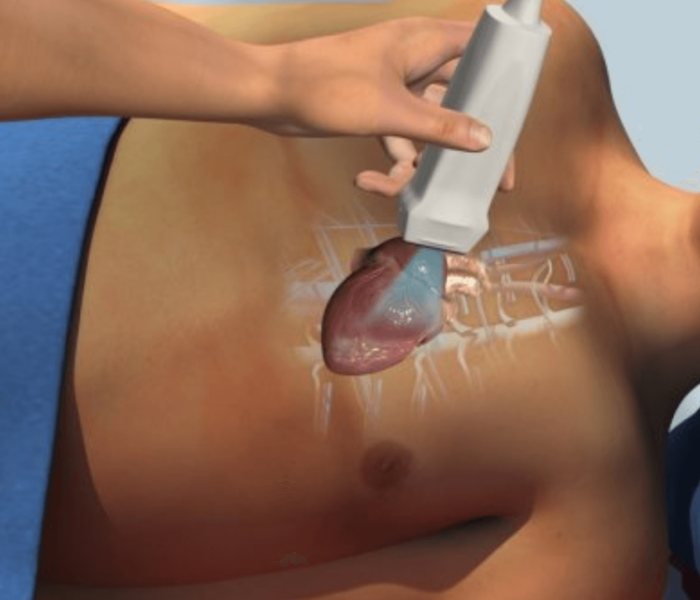
Procedure for the test : the following are the steps for the test :
- The patient is required to lie down on his left side,
- Colorless gel applied to the chest of the patient,
- The transducer felt across the chest for getting views from different angles,
- Usually, a 15 to 35 minutes test but may take longer for people with heart disease,
- Then the recorded lines are viewed on the monitor and taken print on a paper at high quality.
Instructions to the patients : it is a non-invasive method and is comfortable and a verified and safe method of echocardiography. However, the only few things they need to keep in mind are :
- Wear loose-fitting clothes for easy application of a gel,
- Breathe slowly or hold it during the conduct of the test, as per the instruction of the doctor to help in providing better quality images.
End Results : the results of this test show the following :
- The size of the heart and its functioning and its condition,
- The speed and direction of blood flow within the chambers of the heart,
- Detect any abnormality in the valves or its leakage,
- This test also helps in studying the large areas of blood flow.
Importance of this test : this test is helpful to the surgeons and cardiologists as it :
- Helps in measuring the size of the chambers of the heart and the thickness of the wall,
- The pumping function of the heart,
- Changes in the heart due to longstanding hypertension.
- And also detect the potential cause of heart attacks.